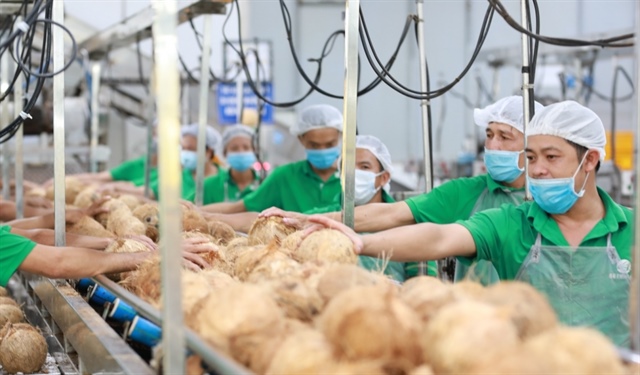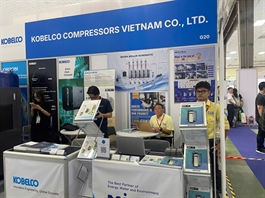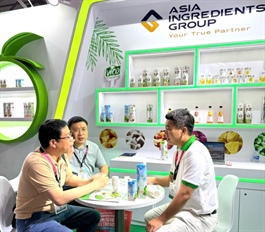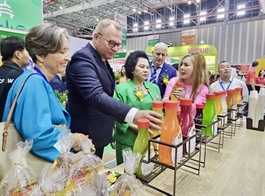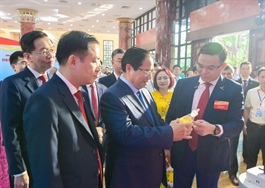Businesses shift to local supply chains and market diversification amid new US tariffs
Businesses shift to local supply chains and market diversification amid new US tariffs
Vietnamese businesses are adapting to new US tariffs by investing in local supply chains, exploring new export markets, and innovating to maintain competitiveness in a challenging global landscape.
On July 31, the White House announced an adjustment to US countervailing duties, reducing tariffs on Vietnamese goods from 46 per cent to 20 per cent, effective from August 7. Goods that are shipped and cleared before 12:01AM on October 5, however, will still be subject to the previous tariff rate.
According to businesses in the textile and garment sector, while the new tariff is still high, it represents a significant improvement compared to the original 46 per cent, reflecting the efforts made by the Vietnamese government during negotiations.
Textiles and garments generated an export value reaching $44 billion in 2024, with the United States accounting for $16.1 billion. Therefore, when the 20 per cent tariff is applied, the increase in product costs will place significant pressure on firms’ competitiveness.
|
Vietnam, however, is not alone, as many other apparel-exporting countries are facing similar challenges.
Leaders of the Vietnam National Textile and Garment Group said that their member units are actively developing a list of raw materials that can be sourced domestically to avoid overseas dependency, and are making production processes more transparent to meet international standards.
To retain orders and secure growth, many businesses have intensified the localisation of raw materials, reinforced domestic supply networks, and sought customers in new markets. This strategy also helps mitigate supply chain risks and bolsters the ability to meet traceability requirements.
In the region, other apparel exporting countries such as Bangladesh, which faces a 20 per cent tariff, and India with 25 per cent tariff, are making competition even fiercer, not just for goods but also in attracting foreign investment.
Vlad Savin, managing director of corporate advisory firm Acclime Vietnam, noted that instead of viewing tariffs as a hindrance, Vietnamese businesses should see this as a catalyst for reforms and transformations.
Alongside this, strategic policy responses are necessary to protect domestic industries, innovate production models, and enhance competitiveness.
“Investing in automation and sustainable production is no longer an option; it is a strategic necessity, especially when it comes to supplier diversification,” he said.
The 2025 Business Confidence Report by the government’s Private Economic Development Research Board reveals that 51.6 per cent of export companies are planning to expand into new markets to cope with tariffs.
In addition, around 35 per cent of local firms are proactively seeking new outlets, 20.8 per cent are focusing on localising production chains, and 14.3 per cent are exploring new raw material suppliers.
Currently, over half of Vietnam’s export value to the US consists of high-tech items such as smartphones and electronic components, along with textiles, footwear, furniture, and agricultural products. This marks a shift in Vietnam's export structure from simple processing to products with high technology content.
A major advantage for local firms is the country’s 17 free trade agreements (FTAs) signed with more than 60 countries and territories. This not only expands market access but also helps businesses adjust their strategies and reduce dependence on core markets.
According to the Vietnam Leather and Footwear Association, companies should effectively leverage FTAs such as the EU-Vietnam Free Trade Agreement, Comprehensive and Progressive Agreement for Trans-Pacific Partnership (CPTPP), and Regional Comprehensive Economic Partnership (RCEP) to boost exports to the EU, Japan, Canada, Australia, and other developed economies.
Strengthening trade relationships with ASEAN, South Korea, the Middle East, and Africa also offers new advantages for Vietnamese businesses.
Tran Ngoc Anh, a professor at Indiana University (the US), noted that US tariff policies are reshaping global trade flows. The US, however, remains a key market both in terms of scale and long-term potential.
“Vietnam needs to seize this opportunity to increase its purchases from the US, invest more in supporting industries, boost material self-sufficiency, and enhance product design and development capabilities. Only by moving up the value chain will Vietnam be able to compete sustainably,” he noted.
The local business community hopes the government will continue negotiations with the US to adjust tariff policies in a more favourable direction in the forthcoming years.
- 17:31 07/08/2025







